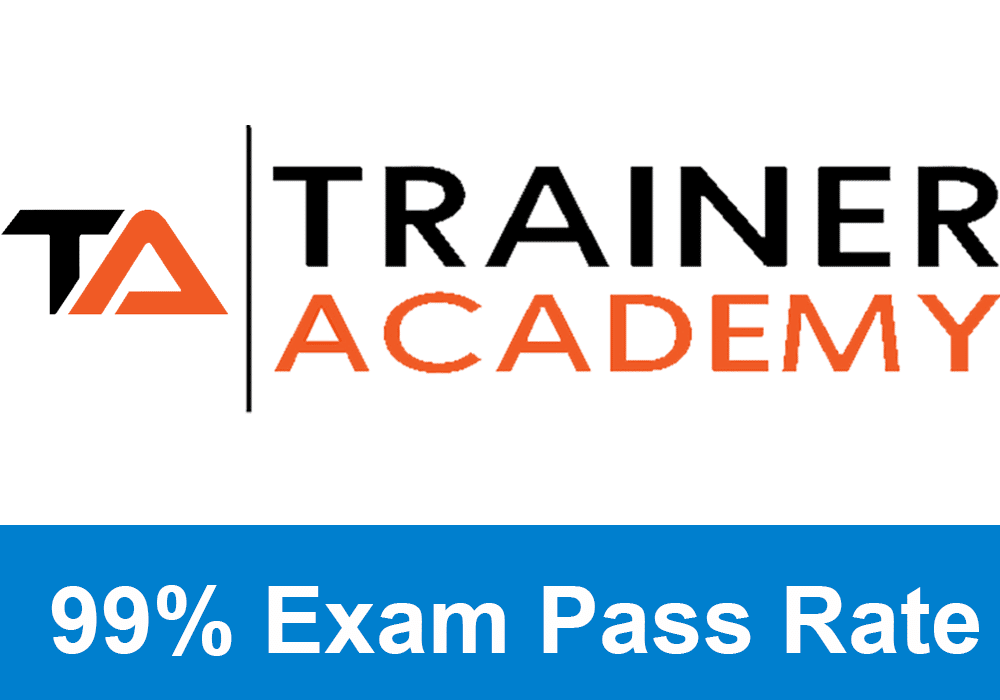You may have read my other article that was about how to be a successful trainer. This article may sound similar but is much different.
In this article, you’ll learn precisely how to become a great trainer. One that gets your clients fantastic results and spreads the reputation of your greatness!
If you’re not quite yet a trainer, take the quiz here to find out which top fitness trainer certifications you should get.
The menu at the top of this page will answer any question related to your personal training. If you have any questions, don’t hesitate to leave me a comment here (I’ll respond within 24 hours). Also, visit the home page for the most recent and popular articles.
This article is about how to be a competent personal trainer that gets your clients the best results in the shortest amount of time. The article on becoming a successful personal trainer (check out my article on how to become a trainer) is mostly about becoming financially successful within the industry.
Although making money is essential, we cannot make enough money if we do not get your clients the desired results. You need to be someone trusted within the industry to gain additional clients and charge a price that you would like.
You must have great traits such as knowledge and motivation to lift your clients to the highest point possible. In my article, I will discuss four valuable points so that you can be a fantastic trainer! Let’s review my article on being an excellent personal trainer!
First thing: you need to fix muscular imbalances!
Before your client can adequately progress through any strength training regimen, you need to pinpoint and correct any muscular imbalances that they may have through stretching and corrective exercise training.
These muscular imbalances have a higher chance of injuring them at some point if they are not appropriately treated. The last thing you want to do is hurt your client. It prevents them from progressing, but there’s also a good chance they will get worse because they may become more sedentary.
They must have the proper flexibility and strength to perform the exercises that they want. An excellent example of this would be the squatting exercise. If your client’s hip extensors or hip flexors are too weak or strong, you should address this before they perform squats or build muscle.
You must balance your client’s musculoskeletal system before throwing heavy weights at them! NASM is a great certification that focuses strongly on correcting muscular imbalances! Check out my list of the best personal training certifications.
Figure out what exercises and routines work best for your client
Everybody’s body responds differently to various exercise stressors. As a professional fitness coach, once your client is neutral, without any muscular imbalances, it will be time for you to test different exercises and routines to see what fits them best.
I have known individuals who respond exceptionally well to barbell chest press exercises and others who respond better to dumbbell chest press exercises. As I said above, everyone is entirely different, so you must keep trying different things to see which ones your clients respond best to.
You need to make sure you ask your clients questions such as: how sore did you get? Did you like the motion of the exercise, and were there any discomforts? Make sure you do not build a cookie-cutter workout for every single one of your clients.
If you do this, you will not be recognized as a good personal trainer! Every program should be individualized for optimal results! The gym is intimidating, so make sure your clients are not distracted by what they see at the gym and help them focus.
Yes, it will take some trial and error, but your clients will benefit greatly from this!
Be sure to track progress quantitatively for your client
This is something that I see lots of trainers overlook, and in the long run, it hurts their client’s motivation. There are other articles in which I have talked about the importance of measuring and tracking results often, so I hope I am not repeating myself too much.
You need to make sure to measure your client’s circumference measurements (waist, hips, arms, etc.), body fat percentage, and weight at least every four weeks! Sometimes this is difficult because you need to find the time to be able to do these measurements.
These measurements should not take too long; you need to squeeze in approximately 5 minutes at the end of the session once a month. You should only not measure your client if they feel too uncomfortable with doing it.
You need to do this to have your clients see their progress since they started the training program with you. This is the motivation for them to keep working with you as well as stick to their diet and exercise regimen.
If you are working with a client of the opposite sex and they do not feel comfortable with you taking the measurements, always ask them if they would like a different trainer(of the same sex) to make the measurements.
Exclusive PTP CPT Offers |
||
|---|---|---|
Gold Standard Cert | Most Popular Cert | Best Study Materials |
A Good Option | A Good Option | Best CPT for you?  |
Another option is to convince them to take measurements independently so that they can keep track of their progress. An excellent way to keep track of exercise routines and measurements is to use software for personal training!
If you don’t like using software, then you should at least use a fantastic workout schedule template that is easy to print out.
![How to be a Good Personal Trainer - the [year] Guide 4 make sure to take measurements](https://www.ptpioneer.com/wp-content/uploads/2016/04/meaurements-with-tapemaybecomiccape.jpg)
You may not be a nutritionist, but you can still give great tips on a diet!
Most personal trainers are not dietitians or registered nutrition experts, but most have a good idea of eating healthy to see optimum results. And although you may not be licensed to advise, you can still provide general guidelines to your clients.
It may seem silly to tell your client to stop eating junk food and to start eating more fruits and vegetables; that is what the human body needs. In all honesty, they probably already know that they should do that. The difference is hearing it from you.
Have a lot of trust and faith in you as a personal trainer, and by just telling them to do that, maybe that is all the push they need to make that change. Let them know that you are holding them accountable to a healthy diet.
This will pressure them to follow through on it, and they will thank you for that. A lot of progress that your client makes is dependent on what they put in their bodies while at home. Try your hardest to make sure that your workouts with them are not getting thrown away the second they get back to their house.
Don’t underestimate the amount of influence you can have over your clients’ eating habits just by mentioning tidbits of advice here and there.
You are some form of a model to your client, so be that personal trainer who practices what they preach. You should eat right as well.
If you want more information about diet and nutrition, I suggest you look into NASM’s fitness nutrition certification!
Become a diverse personal trainer to handle any situation
When you first start working as a personal trainer, you most likely have one general certification under your belt. This is a great start because it allows you to work with the right amount of clients with varying needs and goals.
But to up your game and have more understanding about the best nutrition diet for bones and the appropriate corrective exercises needed to give the best fitness result to your clients.
Getting specialization courses from NCCA accredited organizations will help you have a more grounded knowledge of the latest health and fitness subject of personal training and be a great coach.
Something that you should always be doing in your quest to become a great personal trainer is to continue your education within the field of health and fitness. Most certifications require you to get recertified approximately every two years.
There’s no better way to get recertified than by obtaining a second or third certification!
You could either get a separate “general certification” such as the National Strength and Conditioning Association (NSCA) or National Association of Sports Medicine (NASM), or you can get the specialized certifications such as the CSCS (certified strength and conditioning specialist), CES(corrective exercise specialist).
Performance Enhancement Specialist (PES) of the American Council on Exercise (ACE) is also a recognized certification in the industry that improves your knowledge and expertise in personal training.
No matter what advanced certification you choose, it will open up many new doors for the types of clients you can train! This is always a great idea! Another route is to become a health coach. This is becoming very popular, and it is all about habit formation, which is extremely important.
Other courses on nutrition can help you acquire knowledge about healthy living that will benefit your clients and it will help you obtain your continuing education units.
You can even attend a college and get a degree to improve your credibility in the industry and increase your hourly wage rate.
Continue reading, always strive to improve, and upgrade yourself with the fitness trend in the industry. Don’t think that the health and fitness information you had two years ago is still relevant today.
Exclusive PTP CPT Offers |
||
|---|---|---|
Gold Standard Cert | Most Popular Cert | Best Study Materials |
A Good Option | A Good Option | Best CPT for you?  |
Be at the top of your career always.
Check out my review on the Ace Health Coach certification! If you are wondering how to be a fantastic personal trainer, this is one of the most important aspects!
Bring in professionalism
Firstly, as a personal trainer, appearance matters a lot. Wear the appropriate attire if you work in a big box gym. Do not appear in jeans and khakis, thinking it is just okay to appear casual.
Great trainers always present themselves well. If the gym you work for doesn’t have a branded shirt, buy sportswear from one of the sportswear stores.
And if you are a freelance personal trainer, brand your own T-shirt. Look the path and the clients will know that you are serious about expanding and putting your name out there.
Secondly, a personal fitness trainer doesn’t lean on the wall or appear lost when clients are around. The vibe you give as a good trainer helps the clients push further. You see, your job is serious because it works with the energy emanating from you.
No matter what you are going through personally, leave it at home!
Thirdly, you need to know when to pull or push your clients, especially regarding tough workouts. You should catch up with experienced fitness trainers and watch when they don’t push their clients further.
Rome was not built in a day; it takes time. Your job is to keep your clients on that journey until the fitness goal is achieved.
Praise them when they do well, and encourage them when they struggle.
Never leave anyone behind!
And lastly, be ethical in your dealings. No matter how attractive a client looks, don’t pass the wrong message by flirting around.
Be disciplined!
Be patient and honest
Besides being good at your job, how you relate to others greatly matters. Your relationship with others can help you reach your goals faster.
You must be conscious of your conversations with your clients, subordinates, or superiors in the work environment.
Be a good listener and always own up to your mistakes. You will not get referrals just because you are good at exercise or helping clients reach fitness goals, but also because your demeanor is part of your qualities.
No one will hire a trainer who does not have a good reputation in the health and fitness industry and among clients. An easily triggered personal trainer is a red flag for so many people.
Furthermore, you should set a time frame for activities and try as much as possible to meet up so that you don’t continue to cancel training sessions and give flimsy excuses for not showing up.
Time management
Working certified personal trainers are busy; your work is 24 hours a day. You know what this means if you work with clients online in a different time zone.
A tech-savvy personal trainer will have it easier than a personal trainer that is keeping records manually. A good personal trainer should not sound confused when messaging clients by mixing up the names of clients. When you have your records in digital form, you make fewer mistakes and it saves you time.
If a business owner wants to hire a personal trainer for a 1-on-1 coaching session, he or she will only be willing to pay and keep a trainer who understands that time is money. You cannot afford to be all over the place as a freelance personal trainer.
Invest in technologies that will make your work easier!
So many repetitive works need to be automated, like sending emails, reminding your clients of due payment, reminding your clients of class sessions, scheduling classes, and so many activities that take so much of time should be automated. When you do this, you can create a good relationship with your clients and focus on working with your clients while scaling your business simultaneously.
This is what the best trainers and the smart trainers out there are doing.
This is particularly necessary for personal trainers that are entrepreneurs.
Great communication skills
Communication is key when dealing with clients.
When you are sending your emails, avoid big grammar; make your messages short and simple.
When you call your clients for important information, don’t just assume they know it is you.
You should state your name first, the name of your gym studio, and why you are calling. You can even go further by asking if your call is not disturbing their moment.
Have a professional email address and a signature.
Do not allow your strong-looking fit body to affect your tone when conversing with your client.
Remember, you are in business and you want money as much as you want to change their lives, be polite!
Work close to the big names in the fitness industry
Understudy the big names in the health and fitness industry with a good track record and many years of experience.
You can start by buying their books, following them on social media, and attending their seminars; this will help you move faster.
There is no challenge that you are faced with or going to face in the future that one or two trainers have not experienced in their own personal journey. Your job is to find out how they surmount their challenges so that your path will be clearer.
Conclusion on how to be a good personal trainer
My sincere advice to you is to fall in love with your job; this is the starting point, even before you get the certification. You must have visualized yourself being a health and fitness instructor.
These are my favorite tips I give people on how to be a good personal trainer! If you follow these tips, I guarantee you you will be on the right path to becoming the best trainer in your gym. Your clients will skyrocket their success, and the word about your knowledge and training will spread like wildfire.
Other individuals around the gym will notice your clients’ results, and you will start getting contacted by multiple people interested in your service. Your client’s results are walking advertisements for your business!
The healthy lifestyle of your clients is the best reward for you and, of course, the increase going on in your bank account.
I hope you all liked my article; let me know in the comment section if you have any other tips on improving as a personal trainer!
Check out my page for other types of certification programs for personal trainers.

 Have a question?
Have a question? ![How to be a Good Personal Trainer - the [year] Guide 5 How to be a Good Personal Trainer - the [year] Guide 3](https://www.ptpioneer.com/wp-content/uploads/2023/02/ptp-quiz-desktop.jpeg)
![How to be a Good Personal Trainer - the [year] Guide 6 How to be a Good Personal Trainer - the [year] Guide 4](https://www.ptpioneer.com/wp-content/uploads/2023/02/ptp-quiz-mobile.jpeg)
![Wellness Coach vs Health Coach Career Comparison in [year] 7 health vs wellness coach - a side by side image of a health coach and wellness coach showcasing the differences between each profession](https://www.ptpioneer.com/wp-content/uploads/2024/02/Health-Coach-vs-Wellness-Coach.png)
![Life Coach vs Wellness Coach [year] Career Comparison 8 health vs wellness coach - a side by side image of a health coach and wellness coach showcasing the differences between each profession](https://www.ptpioneer.com/wp-content/uploads/2024/02/wellness-coach-vs-life-coach.png)
![What Is a CPT Certification? + Other CPT Questions [year] 9 What Is a CPT Certification? + Other CPT Questions [year] 5](https://www.ptpioneer.com/wp-content/uploads/2023/09/what-is-a-cpt-certification.jpg)


![Yoga Instructor Career - [year] Salary, Prospects & More 12 Yoga Instructor Career](https://www.ptpioneer.com/wp-content/uploads/2021/08/Yoga-Instructor-Career.jpg)

Very informative article, Tyler! I’ve definitely had to improve my communication skills, and interpersonal skills in general, since starting to work as a personal trainer. It’s been quite the journey, but as you said, Rome wasn’t built in a day!
Thanks for the great read.
Hi Jerome, thanks for the kind words. Glad you enjoyed the article. Good luck with your personal training career.
You definitely need to have a passion for what you do! I love fitness, being in the gym, and continuing to learn and expand with my knowledge of diet, exercise, and how the human body works. Great article
Hey Vicky,
thanks for stopping by and leaving a kind comment. I definitely recommend expanding your knowledge not only with personal training certification specializations but also with nutrition. These fields are constantly changing and it’s important to keep up-to-date.